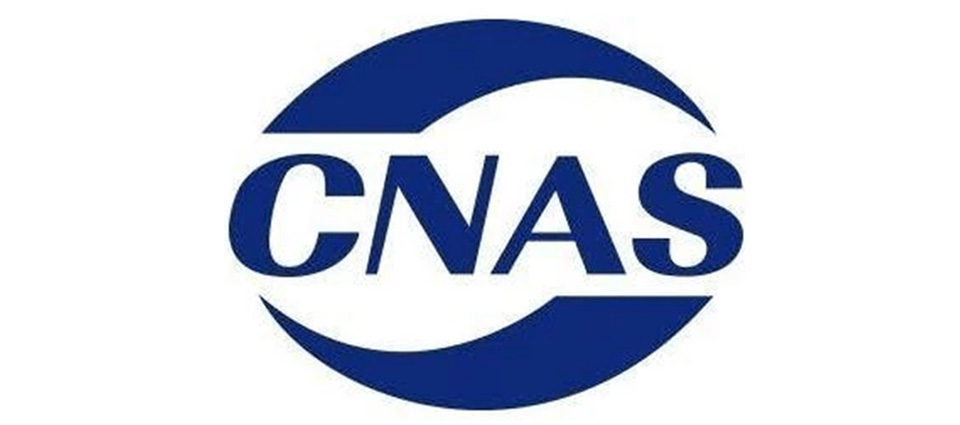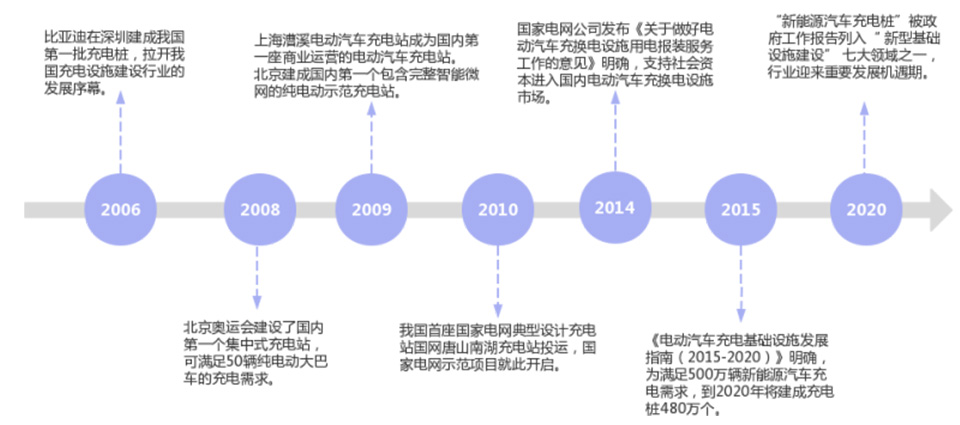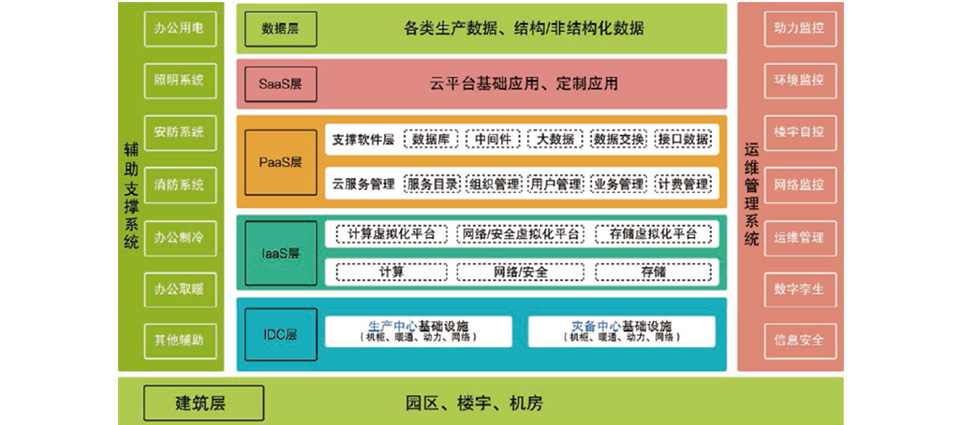Stacked optical innovation enables high security of base station power at low cost

Stacked optical innovation enables high security of base station power at low cost
Summary
“Battery backup + mobile oil generator emergency power generation” is the most basic base station backup power configuration solution in areas with mains power supply. For base stations that frequently require emergency power generation, superimposing a low-power solar system can significantly reduce the cost of emergency power generation and continue to save electricity bills, with a return on investment period of less than 3 years. Traditional stacking solutions have problems such as insufficient utilization of solar energy and affecting battery charging management. Using a switching power supply system stacking compatible with solar input can achieve high profits at low cost. Communication power systems that support stacked photovoltaics are conducive to dynamically adjusting configurations during operation and maintenance. Implementing stacked photovoltaics for base stations with a high number of emergency power generation operations can minimize stacked photovoltaic investment and improve power security while saving electricity bills and emergency power generation in the long term. cost.
There are many problems with batteries and emergency power generation, becoming the first factor in shutting down stations.
With the rapid development of the Internet, people’s lives have become inseparable from the Internet and require ubiquitous mobile broadband. The stable operation of base stations is the basis for high availability of communication networks. Since power outages are unavoidable, base stations need to have reasonable backup power solutions. Battery + mobile oil generator is the most commonly used backup power guarantee method. During a power outage, the battery supports the operation of the base station. When the battery capacity is insufficient, the mobile oil engine is dispatched to the station to generate electricity to ensure uninterrupted operation of the base station.
Due to the general opposition of residents to noise and the access management of the building where the station is located, it is actually difficult to access the station for emergency power generation in urban stations; the power generation distance of rural stations is long, and it is difficult to access the station in high mountains, making it difficult to ensure emergency power generation. An analysis of the causes of base station communication interruptions shows that an average of 57% of network interruptions are related to base station support, and power outages are the number one cause of network interruptions.
Taking the 3,453 sites of a certain operator in a certain city as an example, 195 high-mountain stations are unable to generate emergency power, 2,004 have owners who are often unable to go to the stations to generate power for some reason, and the proportion of sites that cannot be protected by mobile oil generators accounts for as high as 64%. This operator had 2,771 power outages in a single month, and 1,923 stations were disconnected due to power outages. The power outage rate was as high as 69%. The power outage affected 1,322 stations, with an average outage duration of 2.1 hours per station. The number of emergency power generation was 802, and the proportion of power outages was 29%, including 40 times when emergency power generation was not timely, resulting in the interruption of base station operations. It can be seen that the inability to generate emergency power after a power outage or the delay in emergency power generation is the first-factor causing communication network interruption.
Battery + mobile oil machine, backup power support cost is very high
Under the condition that the base station capacity is certain, the battery capacity depends on the backup time requirement. The backup time must be greater than the emergency power generation time on the station, and there should be enough margin. For base stations with frequent power outages, if the conditions for installing a small fixed-oil engine are available, a fixed-oil engine can be installed. For base stations that do not have the conditions for installing a fixed oil engine, additional batteries should be added appropriately. For example, the backup time in suburban counties, rural areas, and mountainous areas can be increased to 5, 7, or 10 hours. For a site with an average communication load power of 2kW, a set of 500Ah batteries is required for 7 hours of power backup, and the battery cost is very high. The mobile oil generator serves as an emergency power supply. During a power outage, power generators are arranged to go to the station to generate electricity. Even if the mains power is restored before the emergency power generators arrive at the site, emergency power generation costs still need to be paid.
Emergency power generation costs include station labor costs, power generation fuel costs, and mobile oil machine amortization costs. The labor cost at the station is related to the local labor cost, which is generally around 300 yuan/time; the fuel cost for power generation is related to the duration of power generation and the fuel consumption rate. Generally, the average fuel consumption per power generation is about 50 yuan; the amortization cost of the mobile oil machine includes the oil machine Depreciation and engine maintenance costs are shared, with an average cost of about 30 yuan per power generation. Rural sites are areas with a high incidence of power outages. The average number of visits to the site may be more than once per month. Based on the emergency power generation cost of 380 yuan each time, if power is generated once a month, the annual emergency power generation cost of a single station is 4,560 yuan. The power generation cost is very high.

Reducing power outages and station outages and improving communication network quality are the top priorities for the construction and maintenance of communication power systems. Whether it is adding batteries to extend the backup time, increasing the frequency of emergency power generation at the station, installing fixed oil generators, etc., it can reduce the power outage rate and improve the quality of the communication network. Due to the high cost of batteries, an average annual investment of about 400 yuan per station is required to increase the backup time by one hour; an additional investment of about 380 yuan is required for each additional emergency station power generation; and the one-time investment cost of installing a fixed oil generator is very high. Both telecom operators and tower operators need solutions that improve security quality at a lower cost.
Site stacking can improve power supply quality and reduce operation and maintenance costs at low cost.
The site stacking solution refers to a solution that superimposes solar energy on the site power supply, installs solar panels that only meet the power requirements of the communication load, and prioritizes the use of solar power. Solar energy is a typical representative of renewable energy, and superimposing solar energy can reduce site electricity bills. For example, for a site with an average DC load power of 2kW, assuming that the sunshine hours are 4 hours (the lowest is 2.84 hours in the national provincial capital Guiyang, the highest is 6.7 hours in Lhasa, and more than half exceed 4 hours), the stacked light solution can save 2920 degrees of electricity annually. , requiring the installation of approximately 2.5kWp of solar panels. The cost for customers to purchase solar panels, solar modules and installation services is 22,000 yuan. If the electricity price is 1 yuan / kWh, the investment return period of the stacked photovoltaic solution is about 7.5 years, making investment decisions relatively difficult.

After stacking, if the base station power outage occurs during a period of sunshine, emergency power generation is not required. Due to factors such as the lack of late-night communication services and the relative danger of going to the station to generate electricity at night, there is actually very little nighttime power generation. In addition, because mobile oil generators are generally not rainproof and it is dangerous to generate electricity indoors, they generally do not generate electricity on rainy days. Therefore, emergency power generation is mostly carried out during the day when there is no rain. During this period, the probability of solar energy being available is very high. Even if there is little solar power generation on cloudy days, the battery backup time can be extended. According to calculations, sites using the stacked light solution can reduce the cost of emergency power generation by more than 80% and reduce the risk of station outages caused by untimely emergency power generation.
For example, a certain operator in a certain city has a total of 432 base stations. In December 2014, it generated power 77 times, and only once was at night. The top 10 base stations generated power for an average of 15.64 hours, with an average power generation of 3.8 times. The longest power generation time was only 5.42 hours. , the power generation duration is relatively average. Under the same emergency support conditions, if the top 10 emergency power generation sites have the conditions to install solar panels, stacking measures can be adopted. Assuming that the proportion of emergency power generation times is reduced by 80%, a single station can save 1,155 yuan in station costs per month. Since December is not the peak period for power outages, it is estimated that a single station can save more than 14,000 yuan in power generation costs per year, which is far greater than the value of electricity savings. The investment return period is only about 1.3 years. If the stacked photovoltaic solution is adopted in batches, it is possible to obtain financial subsidies from the national and local governments. For example, Zhejiang Province provides a subsidy of 0.42 yuan per kilowatt hour for solar power generation, which can further reduce the investment return cycle. Since the cost of emergency power generation is dominated by labor costs, labor costs are on a long-term upward trend. As the application time increases, the return of the stacked photovoltaic solution gets higher and higher.

3 to 5 years is a reasonable investment return period. According to the example, the total investment in the stacked light solution is 22,000 yuan. As long as the annual savings exceed 4,400 yuan, it is worth the investment. The annual power saving of a 2kW site is calculated as 2,920 yuan. It only needs to save 1,480 yuan in emergency power generation costs to meet the five -year investment return requirement. Based on the cost of 380 yuan per power generation , it is worth investing in a photovoltaic solution for sites that require emergency power generation more than four times a year. If solar power generation can receive subsidies, such as 0.42 yuan / kWh and an annual subsidy of 1,226 yuan, and sites have more or less emergency power generation needs, universal overlaying of light on all sites that are qualified to install solar energy will have a very good return on investment. The typical load average power of a single operator 2G/4G site or two operators single-standard shared station is close to 2kW. It can be equipped with a 3kW solar module and 9 × 250Wp solar panels, and only requires a net area of 13 square meters. When the installation area is insufficient, the installation can be under-equipped. For example, only 1.5kW solar panels are installed. The insufficient power during a power outage is supplemented by the battery so that the site ( 300Ah battery) that can only have backup power for 3 hours can have backup power when the sun is better. Extending the duration to more than 12 hours can also significantly reduce the number of emergency power generation times.
In traditional photovoltaic solutions, battery management risks need to be carefully controlled
The traditional stacking solution refers to adding an independent solar system to the site. The DC output of the solar module is directly connected in parallel with the DC output of the existing switching power supply. The solar system and switching power supply are independent of each other. Due to the need to prioritize the use of solar energy, the open circuit voltage output by the solar system should be higher than that of the switching power supply. For traditional stacked light solutions, the output voltage setting of the solar system is very critical. Improper settings will cause some or even all of the solar energy to be wasted. The same result can occur when a switching power supply or solar system voltage measurement circuit becomes skewed. In addition, during equalizing charging of the switching power supply, the solar energy cannot be utilized during this period because the output voltage of the power supply is higher.
The switching power supply has a battery management function that can limit the maximum charging current to protect the battery life. When the solar system output voltage is higher than the set value, the excessive voltage causes the battery to overcharge. Since it is normal for the superimposed solar power to be greater than the load power, when the battery needs to be charged, the excess solar power will also charge the battery, making the battery charging current greater than the charging current limit value set by the switching power supply. The actual charging current of the battery is different from the switching power supply. System measurement values are inconsistent, which is not conducive to battery charging management.
Switching power supplies have temperature compensation functions, and the battery temperature compensation range is ± 2V. Since the temperature compensation function of switching power supplies cannot be associated with the solar system when the temperature decreases, the floating charge voltage of the power supply increases, resulting in a waste of solar energy. When the temperature increases, the solar output voltage unchanged, causing the battery to accelerate charging and lose water. If the temperature compensation function of the switching power supply is cancelled, solar energy can be fully utilized, but the service life of the battery will be affected.
In order to make full use of solar energy and protect battery life, the traditional stacked light solution needs to accurately configure the number of solar panels, carefully set the solar system and switching power supply voltage, cancel the battery temperature compensation function, and use it in indoor sites where the temperature does not change much.
Power supply compatible with solar energy, eliminating battery management risks
With the integration and development of power electronics technology and digital information technology, the power module control chip contains software and algorithms, so that the hardware functions can be defined by software, called soft power supply ( SDP, Software Defined Power ), which can easily achieve compatibility of different functional modules. The compatibility between solar modules and rectifier modules is a typical soft power supply feature. Using a solar-compatible switching power supply system, solar modules can be inserted into the power module position at any suitable site. There is no need to purchase an independent solar control system, except for the purchase of solar panels. In addition to the installation costs, you only need to purchase a solar module from a switching power supply manufacturer.
Since the solar module is compatible with the rectifier module and is controlled by the same monitoring module, regardless of the size of the solar power or whether the battery demand voltage is high or low, solar energy will be prioritized and used so that all solar energy can be utilized. The output voltages of the solar modules and rectifier modules are uniformly controlled and synchronized with battery temperature compensation, and the battery charge and discharge management functions are not affected at all. Shanxi Tower teamed up with Huawei to pilot MTS site power stacking. The stacking project amount was the workload of installing solar panels. The system did not require debugging before it was successfully put into production. Therefore, when deploying sites, it is appropriate to select a power supply system that supports the stacking function to guide the development of power supplies in the entire industry towards multi-functional compatibility. For existing optical sites that should be stacked, if the existing power supply is not a high-efficiency power supply and cannot directly replace high-efficiency modules, priority should be given to multi-functional high-efficiency power supply transformation.
Emergency power generation TOP N management to achieve low-cost stacking
Since it is difficult to predict the future emergency power generation situation during site planning and construction, the TOP N management method of emergency power generation times based on improvement of shortcomings can be used for sites after they are put into operation. The number of emergency power generation times is counted through the site network management system. Select the site with the highest number of emergency power generation times. Stacking at sites suitable for installing solar panels can achieve precise configuration and minimize stacking costs. For example, the Dieguang site in the Shanxi pilot project has a high number of power outages. According to calculations, the annual income of the Dieguang site is as high as 21,000 yuan per year, which is very impressive.
If a power supply system that supports stacked light is fully adopted, regular stacking of light, stacked oil (for those that do not have the conditions to install solar energy, but can install fixed oil generators), and stacked electricity (for those that cannot, oil-stacked sites can be directly equipped with new batteries or lithium batteries) and other means to optimize, gradually eliminate sites that require frequent emergency power generation, significantly reduce the number of emergency power generation stations, reduce emergency power generation costs, and improve base stations while saving energy. reliability. So far, stacked light is the preferred solution to achieve high security of site power supply at a lower cost.





